Tucked away on Bengaluru’s busy Palace Road is one of India’s most important spaces for modern and contemporary art: the National Gallery of Modern Art (NGMA).
The NGMA in Bengaluru has been a perennial favourite with Jammers. With its spacious halls, serene gardens, and a rich line up of exhibitions, talks, and workshops, it invites us to explore India’s artistic journey from the 18th century to today.

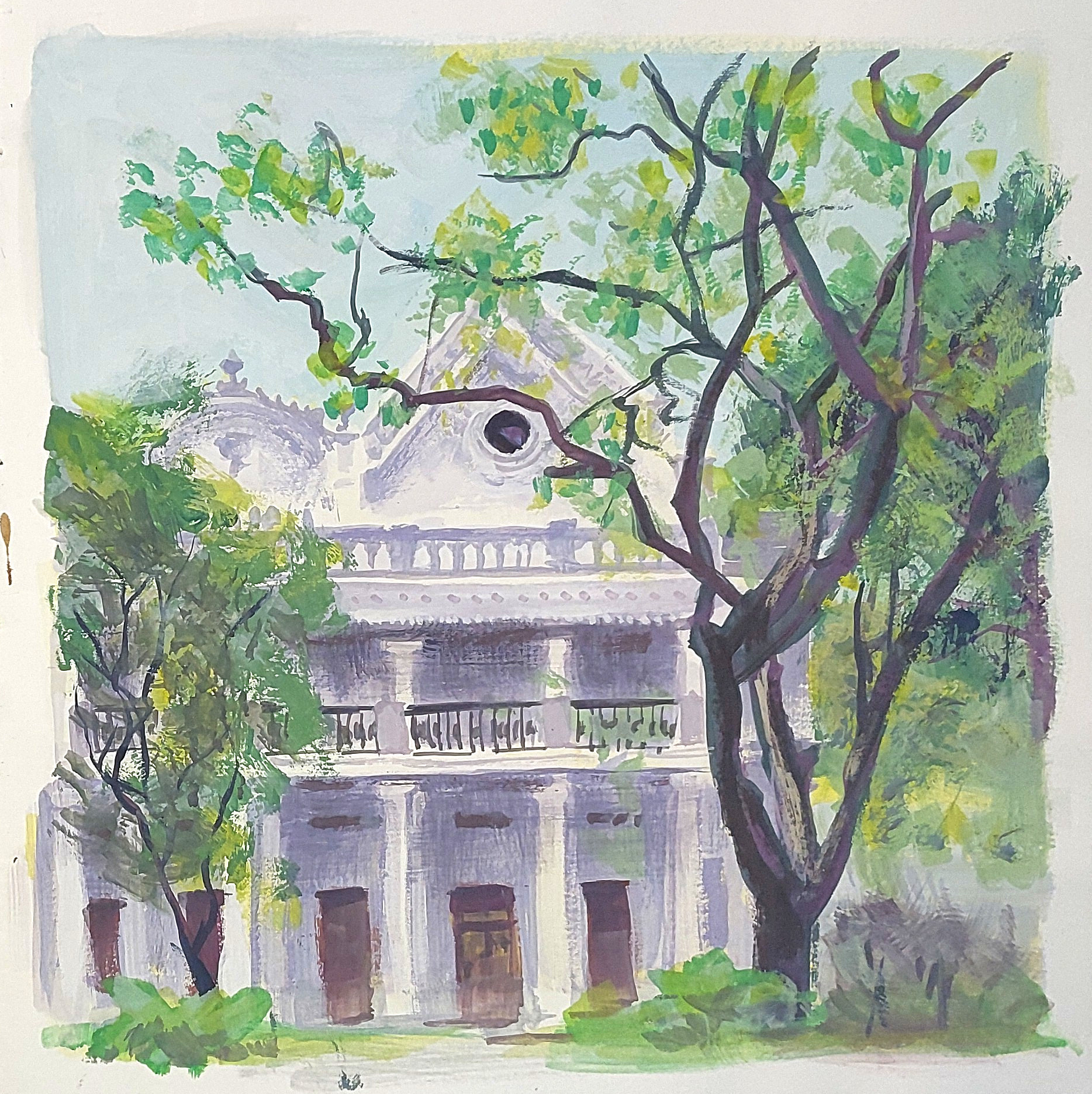
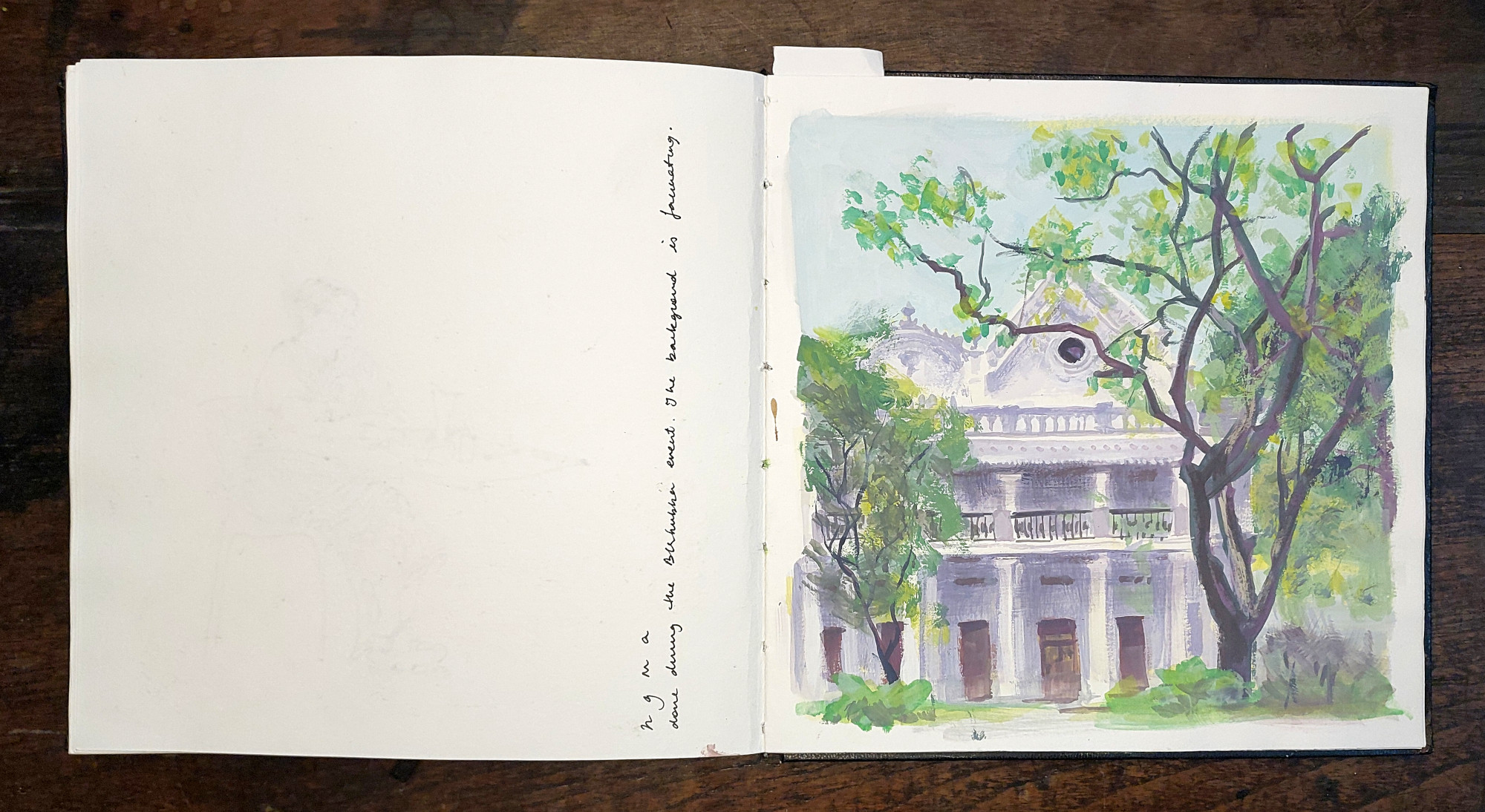

Artist: Smitha Shivaswamy | Medium: Gouache
I enjoy using gouache because it lets me layer the strokes and makes the brushwork very clear. I cannot use gouache inside the gallery, but I can paint outside, in the gardens and the cafe. I painted these on location. It took me about an hour to complete each painting.
Smitha Shivaswamy
A Brief History
The idea for a National Gallery of Modern Art was first born after India gained independence, with the New Delhi NGMA opening its doors in 1954, followed by a gallery in Mumbai. The Bengaluru NGMA is the newest of the three National Galleries. As a long-standing center for artistic and intellectual life, Bengaluru was a natural choice for such an institution.
The Story of the Manickyavelu Mansion
The building that houses the NGMA, the Manickyavelu Mansion, was built over a century ago. The mansion once belonged to the wealthy Manickyavelu family, who were part of Bengaluru’s elite. With its wide verandas, high ceilings, and sprawling gardens, the house is a beautiful example of colonial-era architecture.
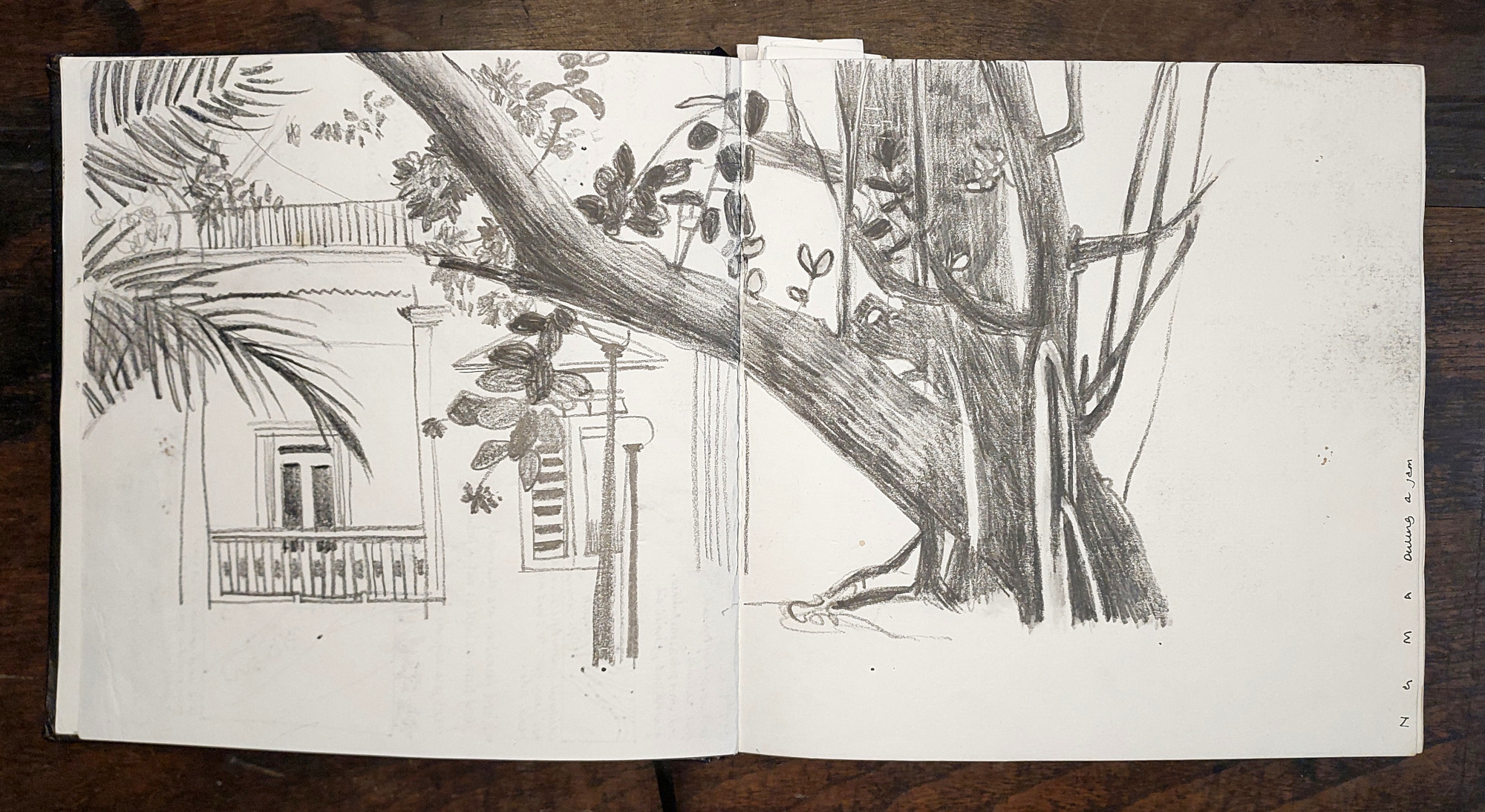
Artist: Smitha Shivaswamy | Medium: Graphite Pencil
Its history, however, goes back even further. The land originally belonged to the Wodeyar dynasty of Mysore before it was passed down to aristocratic families and wealthy mine owners. Manickyavelu Mudaliar, a successful businessman who made his fortune in mining, purchased the property in the early 20th century and gave it its name. The mansion saw the changing fortunes of Bengaluru’s elite, and after the family’s decline, it was eventually taken over by the government.
Many Bengaluru residents walked past it every day without knowing the stories it held. It wasn’t until the early 2000s that the building was restored and reborn as the Bengaluru branch of the NGMA.

Artist: Smitha Shivaswamy | Medium: Pen and Wash
Sketching at the NGMA
For those of us who sketch, the NGMA is a goldmine of inspiration. The building itself, with its grand facade, leafy courtyards, and intricate railings, offers endless subjects to be drawn.
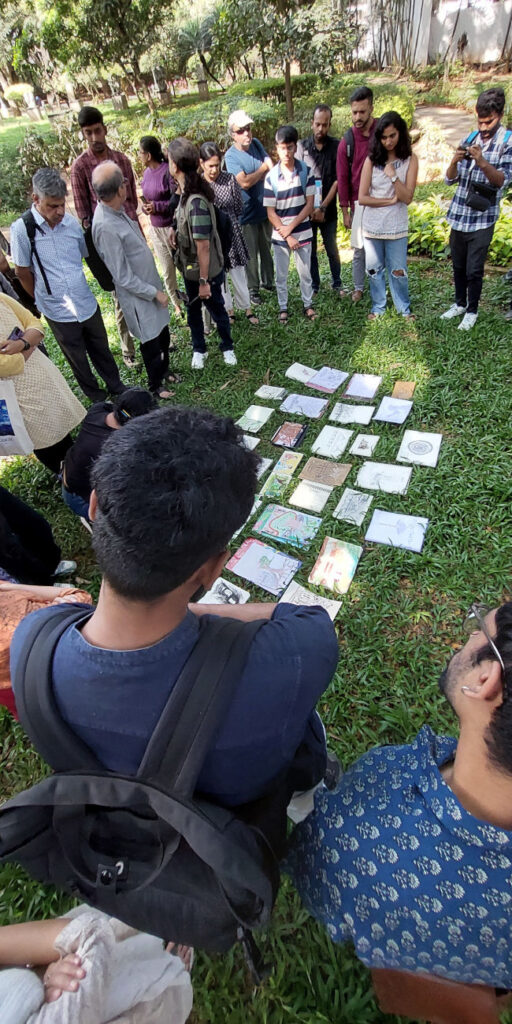
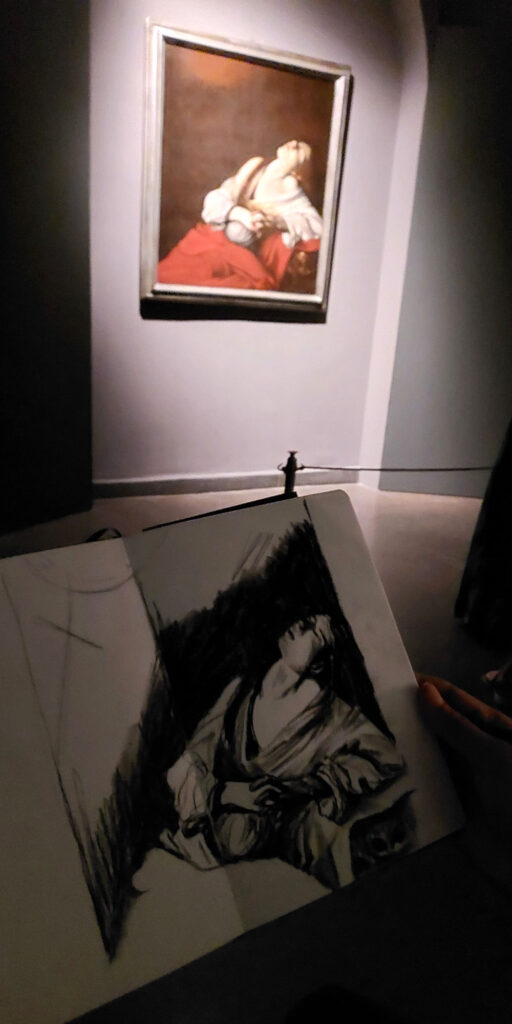
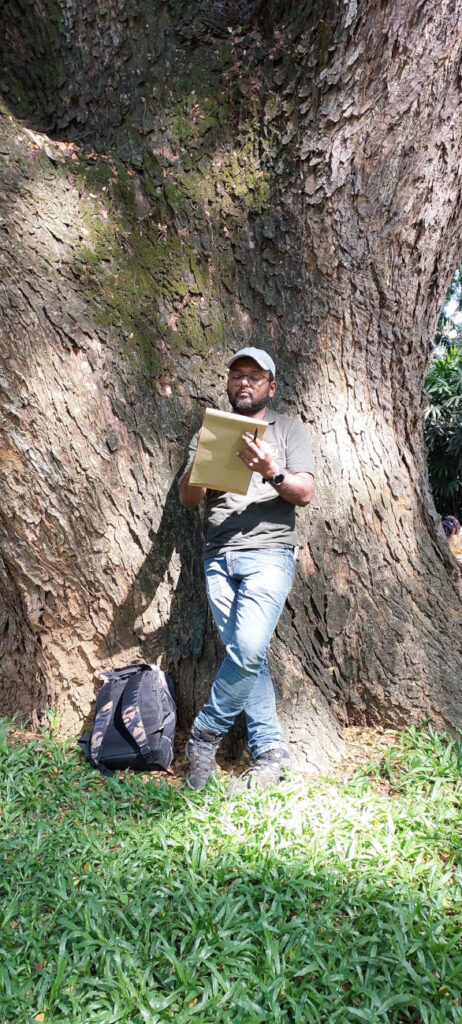



Some Jammers prefer to sketch in the gardens while others prefer the cafe space. You can sit under a century-old tree in the gardens, capture the colonial arches of the mansion, or wander inside to sketch the exhibits.
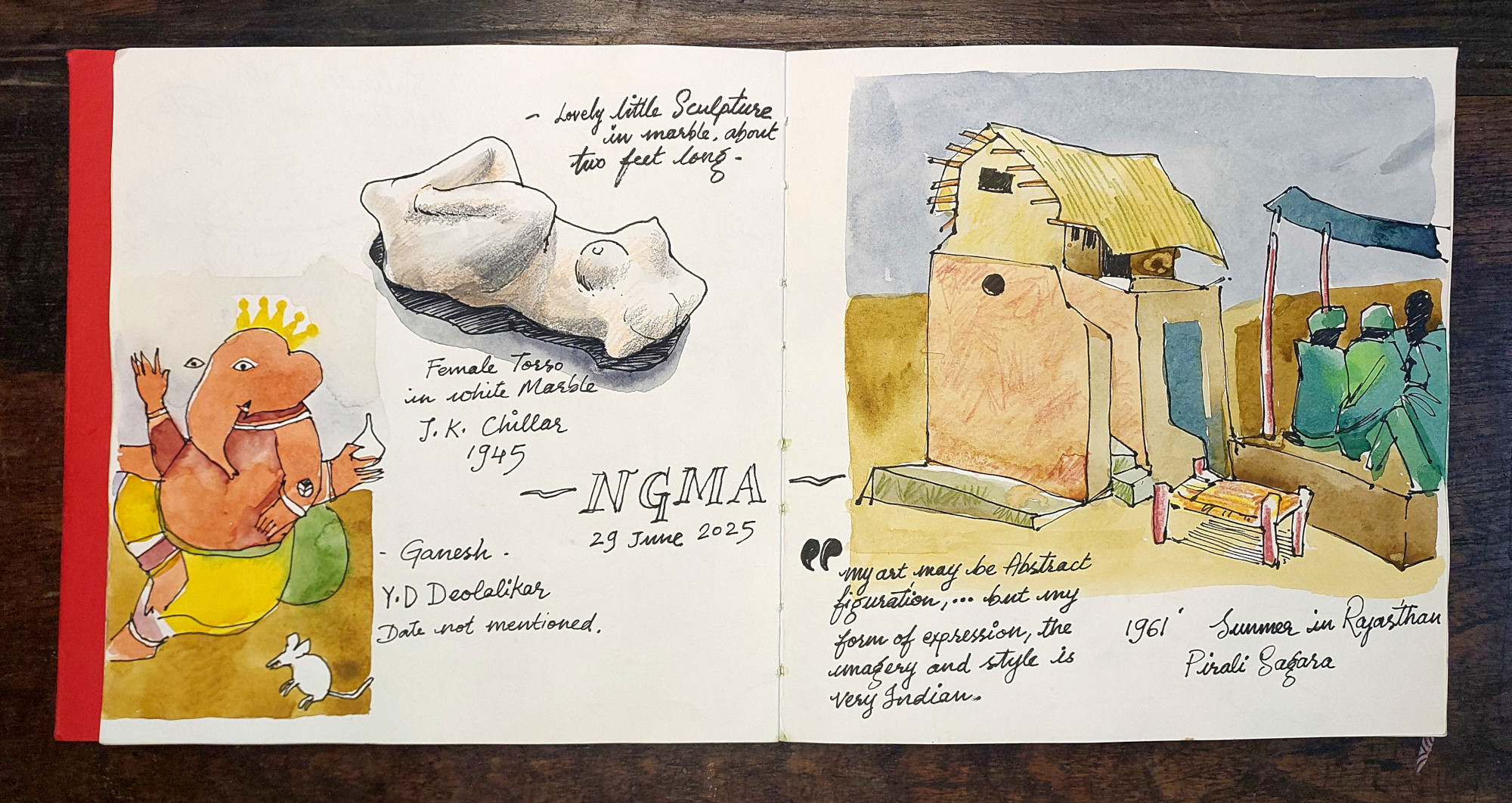
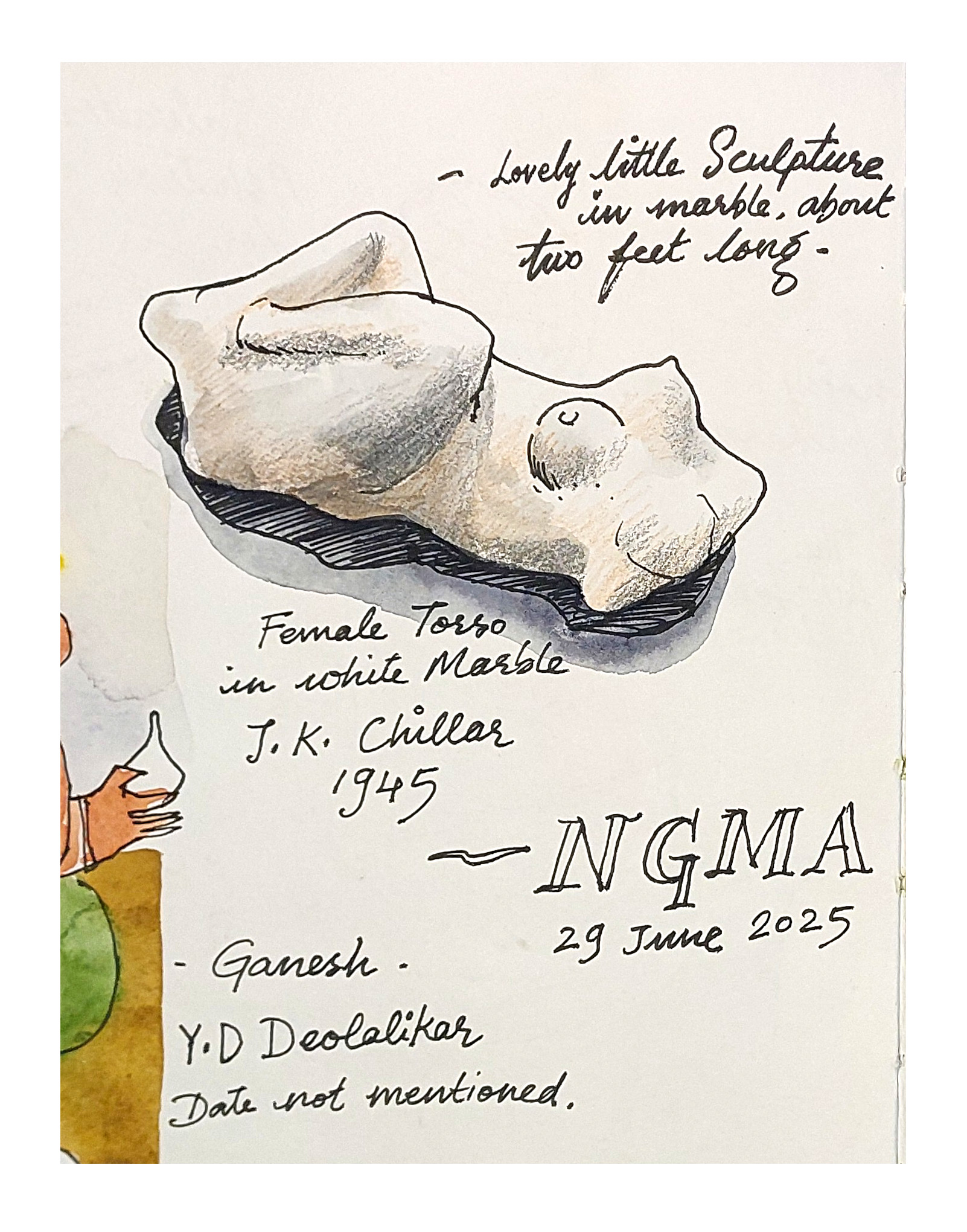


Artist: George Supreeth | Medium: Pen, Watercolour and Coloured Pencils
I drew these exhibits at the NGMA using a waterproof gel pen. At the gallery, my focus was on drawing and making notes. I took plenty of pictures to identify the colours. Back home, I used watercolour and coloured pencils to add some colour to my sketches.
George Supreeth
It is important to note however that wet media such as watercolour and acrylic are obviously not allowed. Neither are easels, nor for that matter, bags, but no one will object if you draw in a small A4 or A5 sketchbook.
More than the architecture or the collection, what makes sketching at the NGMA so special is the atmosphere. Unlike the hurried pace of the city outside, the gallery slows you down. It encourages you to pause, notice details, and take in the way light and shadow play across the old wooden staircases or the sculptural forms on the lawns. Sketching becomes a way of honoring the building, the art, and the simple act of seeing.
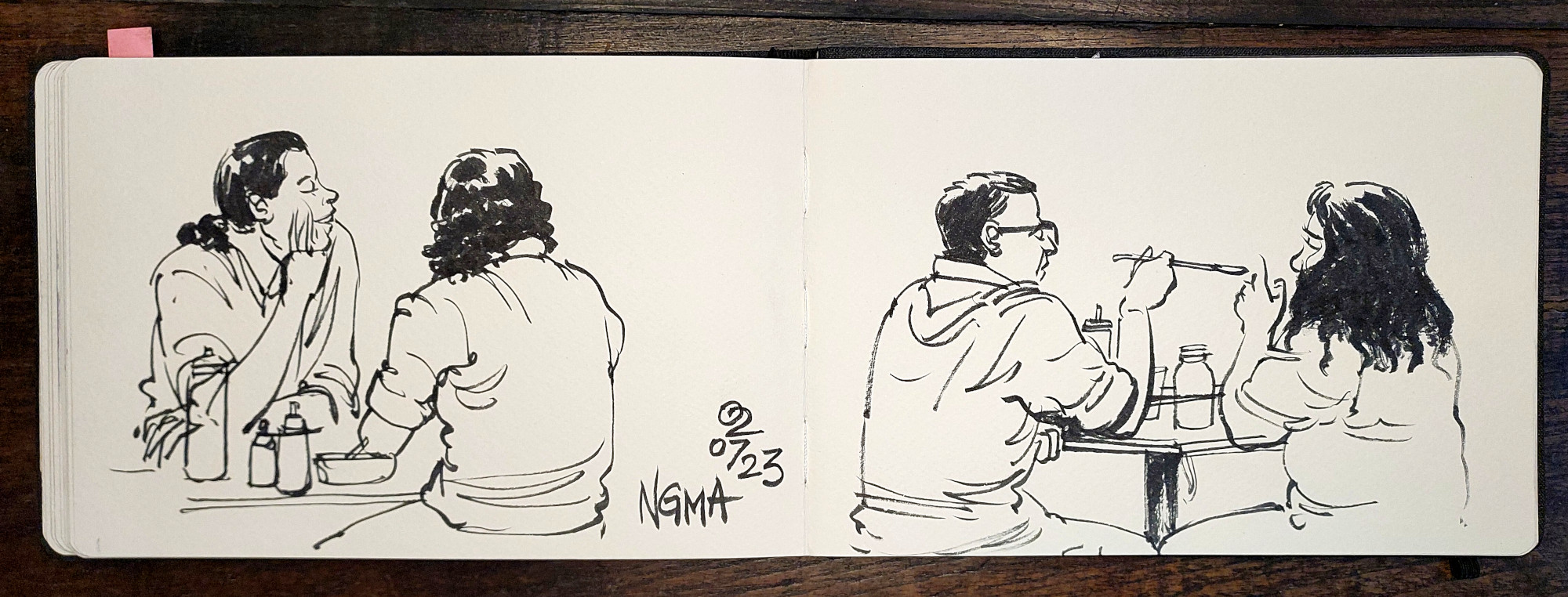
Artist: George Supreeth | Medium: Black Brushpen
Packing for a day of Sketching at the NGMA
Since the NGMA is at the heart of the city, you don;t need to carry too many things, so pack light. If you intend to draw within the gallery, then carry a small sketchbook, one that you can cradle in your arms. An A5 or A4 sized sketchbook will work just fine.
Carry non-messy art material for gallery drawing. Pencils, pens or brushpens are good choices. If you’d like to add colour, consider carrying colour pendils or brushpens in a small belt pouch or fanny bag.
If you plan on drawing in the gardens, or at the cafe, you have more options. You can carry a small watercolour palette and larger sketchbooks too. Small portable easels are fine as long as they don’t attract too much attention or disrupts the functioning at NGMA.